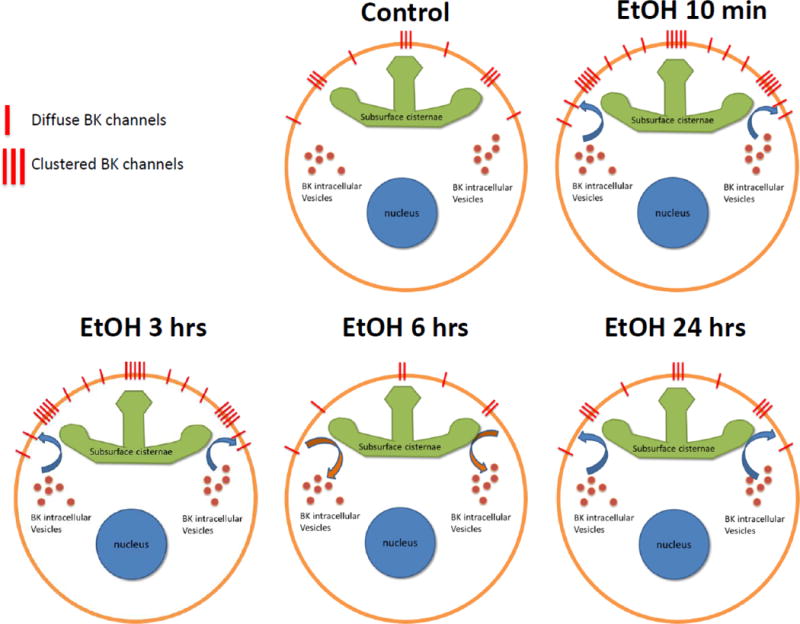Figure 10.

Model: time-dependent changes in BK expression and trafficking after exposure to EtOH in hippocampal neurons. Under basal conditions the BK channel resides in the plasma membrane in two populations: clustered and diffuse. The clustered channels are almost exclusively associated with sub-surface cisternae of the endoplasmic reticulum. Moreover, there is a pool of intracellular BK in the cell body which is in balance with the BK channels at the surface through a regulated trafficking process. Upon EtOH exposure there is a rapid increase in perimembrane expression, possibly a translocation of the intracellular pool to the surface, which shifts the balance towards insertion of the channel. BK channels are inserted into clustered and non-clustered areas, therefore both populations have an increase in BK channel perimembrane expression. The increase in BK perimembrane expression observed after 10-min of EtOH is maintained for up to 3-hrs of EtOH exposure. However, after 6-hrs of EtOH exposure there is a drastic shift in trafficking that now favors the internalization of the channel, reducing BK channel surface expression significantly below basal levels. If the exposure to EtOH is maintained up to 24-hrs there again is a shift in balance towards insertion of the BK channel, which returns BK channel perimembrane levels to baseline. This process also takes place in both clustered and diffuse populations.
